

| My pages about the Big Lakes |
| My travel stories | My photo impressions | ||
| Husaby | Kaga | ||
| Rök | |||
| Tiveden National Park | |||
| Vadstena | |||
The big lakes
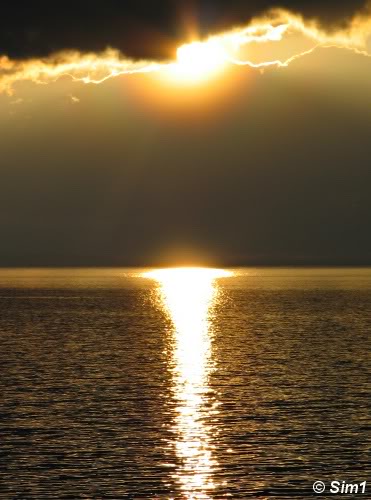
Early evening
Feeling tired
Been hiking all day
And wondering....
Will we see a sunset tonight?
mmm... I don't think so
I can just imagine it here
Or?
Chilly outside
But I want to be there
Staring at the sky
Dark clouds of rain
But oooh there it is
The sun!
It's hypnotising
A shiver
Not because I am cold
Just because
It is so beautiful
The Big Lakes of Sweden, May 2005, by Sim1
A short intro to the area around the Big Lakes
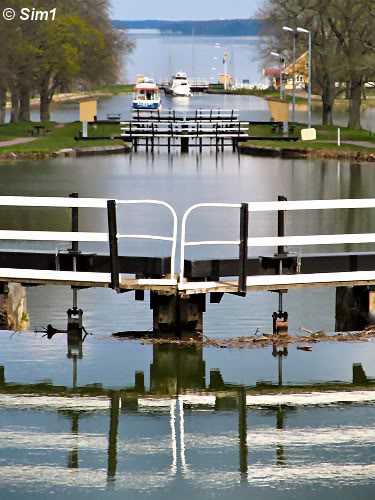
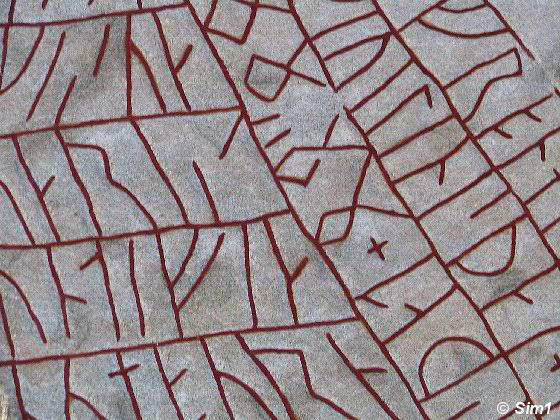
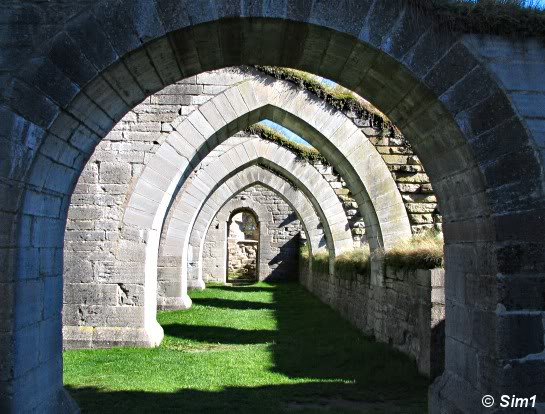
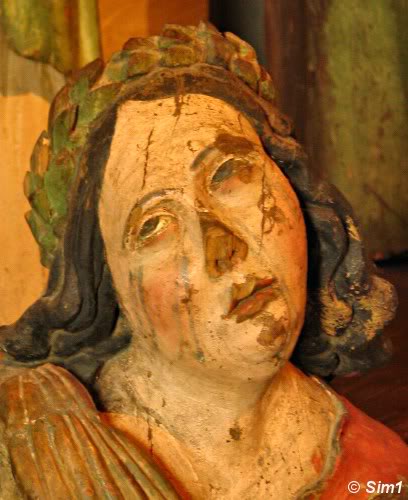
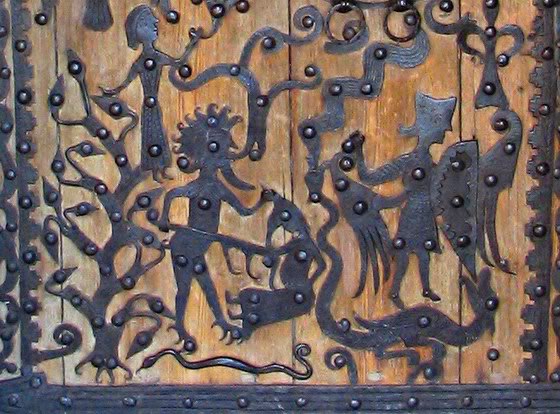
Area: The Lakes of Vänern and Vättern and the area surrounding them.
This area contains a lot of historical landmark but also different landscapes. The deep and dark forest of Tiveden was for long a time a forest you would keep away from, due to pirates, thieves, trolls and other dangerous creatures. In the old days this was described as the border to the wild and unreliably people of the north. Nowadays it is a National Park and a great place to enjoy nature and go for a hike.
The area around Lake Vättern also has a lot of important historical sites like Alvastra Kloster, Visingsö and Vadstena. Göta Kanal the long waterway through Sweden with lots of channels and locks uses both of the lakes.
Interesting points to see in the area are:
• Vadstena: A beautiful little town with lots of history. Kungsgården for example which is the oldest preserved Royal building in Sweden, from the 11th century. You can also visit the impressive looking Vadstena Castle.
• Alvastra kloster: Monastery founded by the only Swedish saint Birgitta.
• Omberg: With remarkably nature and nice view from tower at the top.
• Husaby church: With its triple turret tower and ceiling paintings from the 1300s.
• Tåkern: The most important bird reserve of Sweden.
• The National Parks of: Djurö (in Lake Vänern), Tiveden and Tresticklan.
• Göta Kanal: the channel waterway across Sweden at Motala - Borensberg.
• Vreta Kloster: A beautiful monastery.
• Kaga: a lovely little church known for its beautiful frescos.
• Gränna: with the Polkagrisar (typical Swedish red and white twisted candy).
• Rök: Swedens most famous Rune Stone.
• Rogslösa: With a door like you have never seen before.
The ruins of Brahehus
• Visingsö: An island with a history. Location of the first Royal Castle.
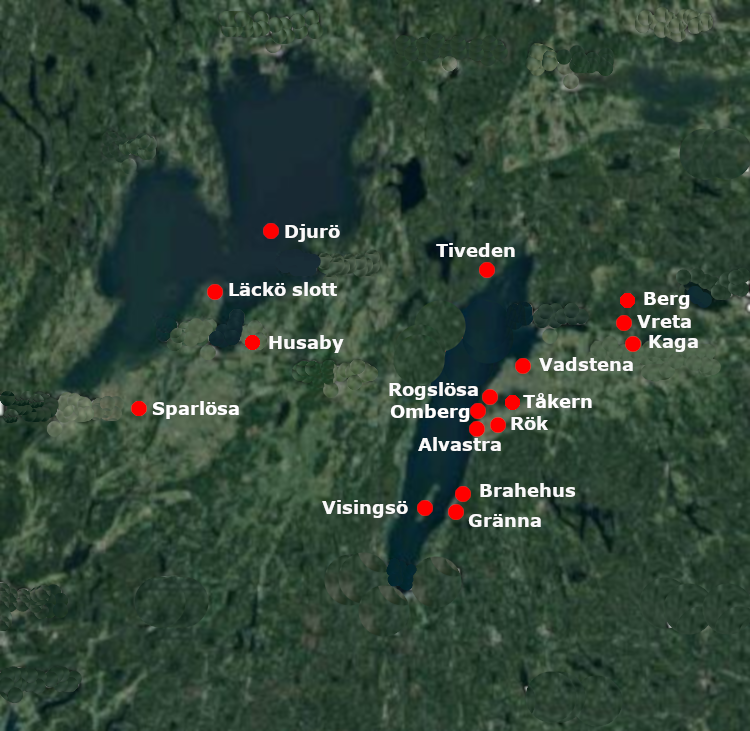
My travels in the Big Lakes area

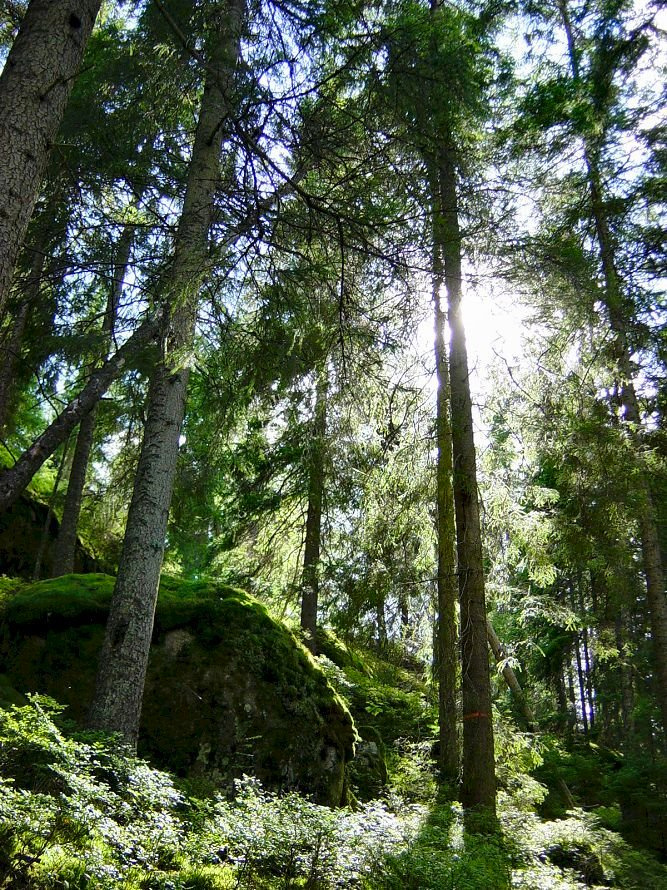
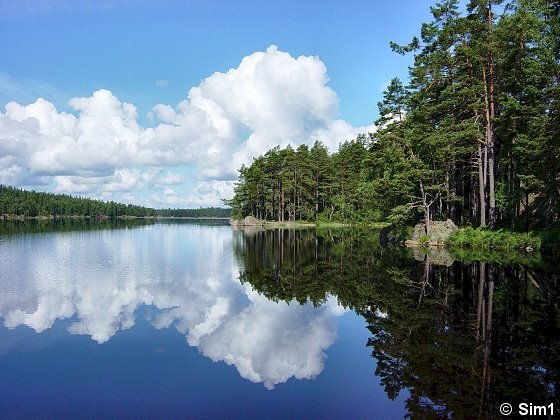
Tiveden National Park
The deep and dark forest of Tiveden was for long a time a forest you would keep away from, due to pirates, thieves, trolls and other dangerous creatures. In the old days this was described as the border to the wild and unreliably people of the north.... and when you walk around in Tiveden, these thoughts are easy to understand. This park makes your imagination come alive.
Tiveden National Park is one of southern Sweden's wildest forests. It is located between the big lakes Vänern and Vättern, and it has always been considered as wild and dark and inaccessible. It has a mystic touch; you can almost see the gnomes and elves behind the stones or trees.
For me, Tiveden is one of the most beautiful national parks in the southern part of Sweden, and I've enjoyed it so much that I have visited 3 times so far :-) When you are in this part of Sweden and you love nature, don't forget to spend at least one day in Tiveden National Park and do one of the hikes. I am sure you won't regret it.
I made a separate page where I will take you on a virtual walking tour through Tiveden National Park.

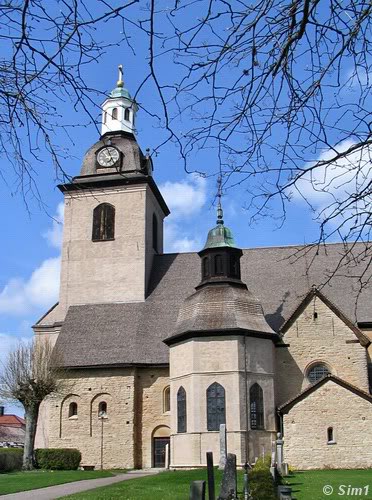

Let me start my tour in Östergötland on the east side of Lake Vättern. First stop is the Vreta Kloster or Vreta Monastery. At Vreta, just outside of he city of Linköping, you can visit the Vreta Church and Convent. In Swedish it is called Vreta Kloster ( kloster = abbey, monastery; convent). The church dominates the surrounding landscape, located on a little hill overlooking the landscape. While travelling towards Vreta from the city of Linköping, I could see the church long before I got there. Maybe the church isn't that impressive on the outside, but it is certainly has a charm to it and is worth a visit.
The surrounding area of the church and convent has been inhabited since prehistoric times. Vreta itself is mentioned in documents for the first time in the 12th century. The church is one of the most interesting in Sweden, with many medieval works of art. Next to the church you can still see the foundations of the conventual buildings and the cloister. During my visit they were working on this area, so unfortunately I couldn't take a look at it. Still intact is the convent house from the 13th century.


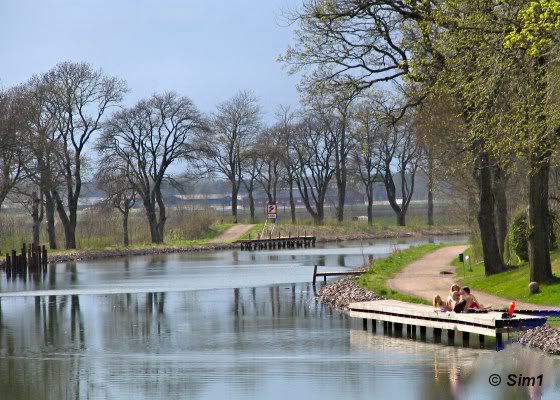
Not far away from Vreta Kloster is the little village of Berg and the famous Göta Canal. At Berg you can find the Carl Johan flight of locks with no less than 7 levels. These locks raise or lower the boats 18.8 metres between Lake Roxen and the Berg guest-harbour. In total there are eleven locks in Berg.
The Göta Canal is a 190 km long canal and it is one of the largest civil engineering projects in Sweden. The canal stretches from Mem at the east coast to Sjötorp on Lake Vänern and has in total 58 locks. The canal was built between 1810 and 1832. Most of the canal was excavated by hand using iron-shod wooden spades. The Canal used to be a very important transport route for both goods and passengers. Not anymore these days though, it has now become a well known tourist attraction.
During the summer season it can get quite busy with tourists here at Berg, but on this nice sunny afternoon so early in the season it was a great place to make a quick stop. The locks are quite impressive, seeing so many in a row. And the boats in the distance give a little romantic touch to the place. It made me dream away for a while, while enjoying the warmth of the sun on my face. But most of all I liked the landscape surrounding this part of the Göta Canal. On either side of the canal here at Berg there are the old towpaths, ideal for a lovely stroll along the canal.
When I left Berg to continue my trip through Östergötland I decided not to take the main road, but take a more off the beaten path trail. I ended up on one of those lovely winding roads beside the canal, a joy to travel on when you are not in a hurry. For me this was the perfect ending of a very nice day.
Berg is located north of the city of Linköping, at the westside of Lake Roxen.

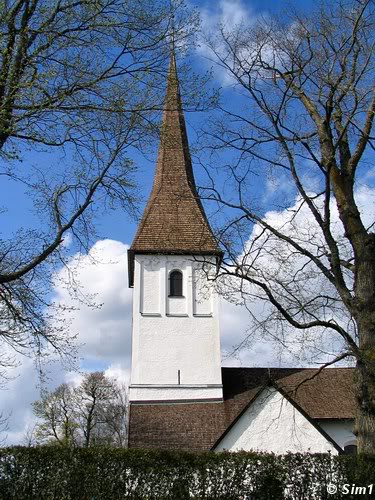
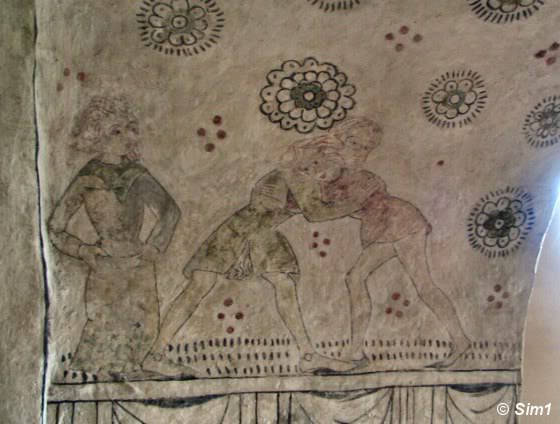
My original plan was to visit the little church of Risinge, which is famous for its beautiful fresco's. Unfortunately this early in the season (early May) the S:ta Maria Church in Risinge isn't open to the public, so you can imagine my disappointment. But I stumbled upon some good news while doing research for this trip! I discovered that the little church of Kaga was decorated by the same painter as the Risinge church. So without hesitation I added Kaga to my travelplans. And I can say I wasn't disappointed! This church is a little gem!
the Kaga church was built by King Sverker (d. 1156) on the old pagan cult site of Allguvi. On the outside it is a small white church, quite elegant with it's high tower. On the inside you will be surprised by the painted valves giving this little church a special atmosphere. The church itself dates back to 1156, but most likely there has been a church previous to this one. The present spire was added later to the church, most probably in the 15th century. Kaga church is one of the best preserved churches in Östergötland from the Middle Ages.
Your can read more about this charming little church on my Kaga page

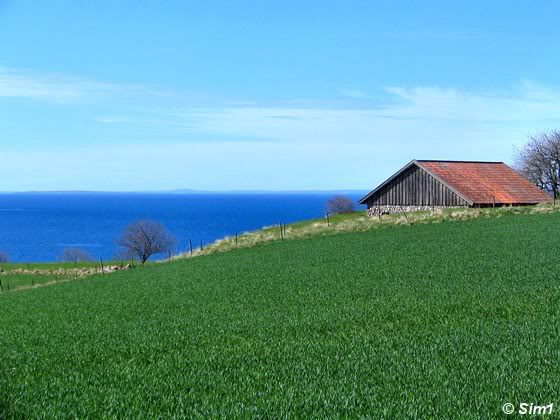
A view from Omberg
It is time to drive towards the west and visit the shores of Lake Vättern. And Lake Vättern is not 'just a lake' it is the second largest lake in Sweden and Europe's fifth largest lake and it is a lovely place to visit.
The name Vättern means simply water, and a lot of water it is! But what I found most striking was its colour. It is not often you see a wonderful blue lake like this one. Admitted, I was in luck with the weather, the conditions were just right to bring out the blue colour at its best.
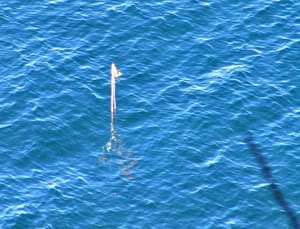
Some facts about Lake Vättern:
Surface area: 1.912 km2
Length: 135 km
Width: 31 km
Greatest depth: 128 m

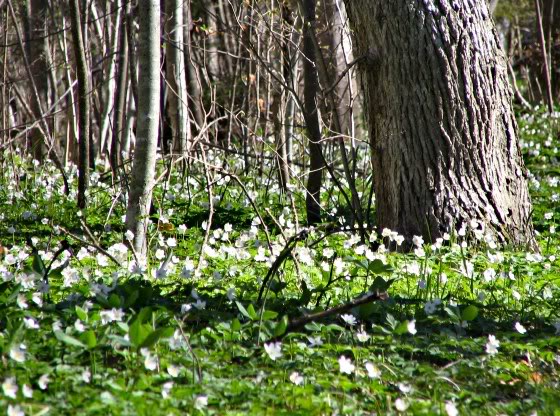
Vitsippa at Omberg
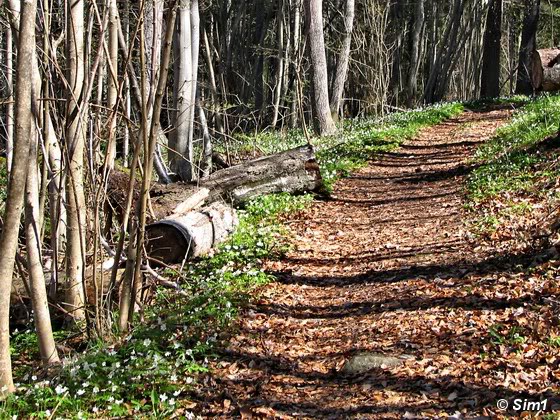
Omberg
It is early May 2005 and the feeling of spring is in the air and what better to do during the early spring then to see nature slowly waking up. Especially after a long Swedish winter! A visit to Omberg sounded like a great plan! I was looking forward in going on a stroll in the woods, see the spring flowers and the gorgeous views over lake Vättern. But maybe, looking back on my trip, I was a bit too enthousiastic. Yes, I got all what I wanted, a stroll in the woods, gorgeous views over lake Vättern and even some spring flowers. But... but..... it didn't live up to my expectations. Nature was still very sleepy and only the 'vistippa' (see photo) had woken up after the long winter and I had hoped for so much more. Something to blame on myself as maybe early May is a bit too early for such a visit. And maybe there was something else that caused my disappointment as well..... or maybe my expectations were just a bit too high.
Let me say first of all that Omberg IS a beautiful nature area! And it IS a wonderful place to go for a nice stroll in the woods! And it is not surprising that it is so well known and a popular for this very reason. And maybe when planning my own trip I should have thought of this. Popular means people, and I was looking for a nice and quiet stroll in the forest, surrounded by nature and not so much by people. So is Omberg worth a visit? Oh yes! But keep in my that it can get relatively crowded here on nice sunny days.
So what is there to see and do at Omberg? First of all let me mention the views! On a clear day you can see for miles and miles from the top of Mount Omberg, called 'Hjässan' over the surrounding landscape. They even have a little watchtower here to make the view even better. To the west is Lake Vättern and to the east you can see the plains of the plains of Östergötland including Lake Täkern.
So what made Omberg to what it is? Omberg is a horst that slopes steeply into Lake Vättern and dominates the plains. Omberg consists of granite and porphyry bedrock, which solidified 1.7 billion years ago.
Hjässan
The highest point on Omberg, 264 metres above sea level, with great views over the surrounding area.
Ombergs Naturum
The Naturum is an information centre, often attached to national parks and nature reserves in Sweden. Here you can see a nice exhibition about the nature at Omberg. It is also a good starting points to many hiking trails in the area.
Ellen Keys Strand
A well-preserved house from author Ellen Key beautifully located at the shore of Lake Vättern
Västra väggar
Lookout with beautiful views over Lake Vättern.


Alvastra Kloster
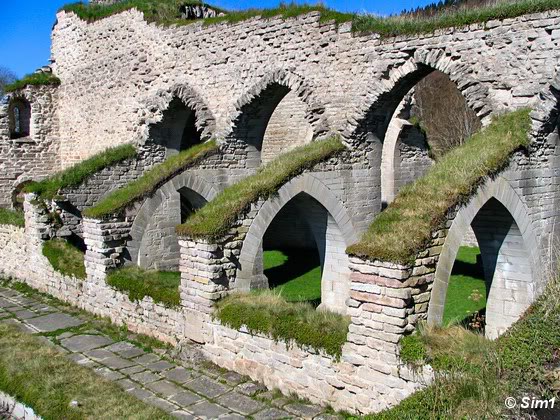
Alvastra Kloster
Just a few steps away from Omberg you can visit the ruins of the Alvastra Kloster (Kloster means "monastery"). And it really is a few steps! So close really that you combine a walk at Omberg with a little detour-walk and visit the ruins at Alvastra at the same time, just like I did. The entrance is for free, so don't miss out on these beautiful ruins.
Alvastra was Sweden's largest monastery and it dates back to 1143. The monastery was founded by the the influential Cistercian order and it flourished for almost 400 years. After its decay the construction materials were used in the making of Vadstena Castle and Per Brahe's buildings along Lake Vättern. But luckily some of Alvastra Monastery survived and the ruins have been restored and preserved. I found it a fascinating place to explore and I can recommend a visit if you are in the area. You can walk around freely here, having a good look at the architecture of the ruins. There is some information about the ruins available at the site, like for instance a little model showing how the monastery used to look like.
The monastery was founded by French monks of the influential Cistercian order in 1143. These monks came all the way from Clairvaux in France, bringing modern methods of administration, technology and archaeology to this part of Sweden. This part of Sweden played an important role in the development of the Swedish Kingdom during the Middle Ages. This was the home of the powerful Sverker dynasty. Sverker the Older for example has was seen as the ruler of the Swedes at those times. The story goes that the Sverker dynasty bought the land and gave it to the monks to build this very monastery.
The building material of the monastary is limestone from Omberg, and its architecture is simple, as still clearly can be seen. This simplicity makes sense as it is in accordance with the order's decree against extravagancies. French masters, with the assistance of people from nearby, build the monastery.
Alvastra kloster is located close to the shore of Lake Vättern, about 10 kilometres north of Ödeshög along road 50 (from Vadstena till Ödeshög).


The beautiful door of Rogslösa Church
Rogslösa: this place is all about a "door". A door? you will probably ask me...... Yes a door! But an amazing door! The village of Rogslösa is tiny, very tiny, nothing more then a few houses and a church. And this church has this door that is worth while visiting. And if you don't believe me, you really have to go and take a look for yourself.
The church of Rogslösa dates back the the early 12th century and unfortunately was closed when I visited. But even if it is closed, you can still see 'the door'. This door also dates back to the 12th century and it is richly decorated with wrought iron. The door is decorated with biblical subjects and jingling rings. I've added a photo (and hopefully will add some more in future) to give you an impression of the door and as you can see it is rather amazing. As Rogslösa is so close to the main road, it is certainly worth the detour, even if it is for just a 'door'.
To get to Rogslösa: follow highway 50 between Ödeshög and Vadstena. About 2 kilometers norh of Omberg you'll se the sign towards Rogslösa.

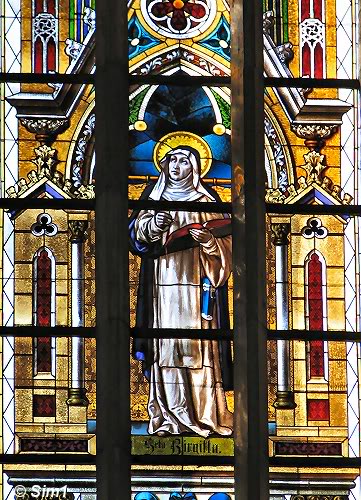
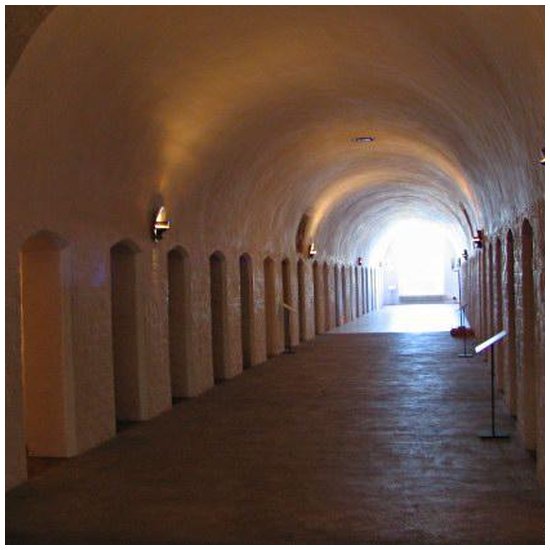
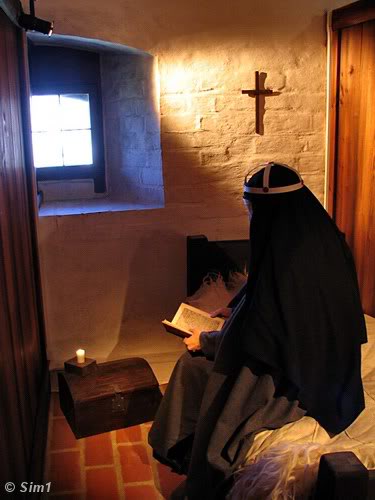
The Vadstena Kloster has now turned into a museum mainly devoted to the life of St.Birgitta and how life was during her era. They did a lot of work creating this museum and the end result is a great mix of history, displayed through old artifacts but with help of modern technology. This sounds like a crazy mix, but it is excellently done. The whole gives a lively display of life during that time and a fascinating insight into the life of St.Birgitta. I think this is one of the best museums I visited in Sweden and I can absolutely recommend a visit. You can join a guided tour or explore the place by yourself. Or do like I did, make a good combination of the two.
Your can read more about the Sancta Birgitta Convent on my Vadstena page


Vadstena Slott
I visited Vadstena to see the Sancta Birgitta Convent, but what I found was not only that, but much more! Vadstena was a true surprise for me. It is a lovely old town with around 5,500 inhabitants, and in each and every street you can feel history.
I will highlight a few of its historical places in the next few tips, like the Vadstena Kloster, the Vadstena Slott and the Abbey Church but there is more to see. Like the lovely harbour located at Vadstena Slott and the town hall from the 15th century, which is Sweden's oldest. I loved to stroll around in the little streets and in many of the little shops you can buy handmade lace from Vadstena.
Your can read more about Vadstena on my Vadstena page

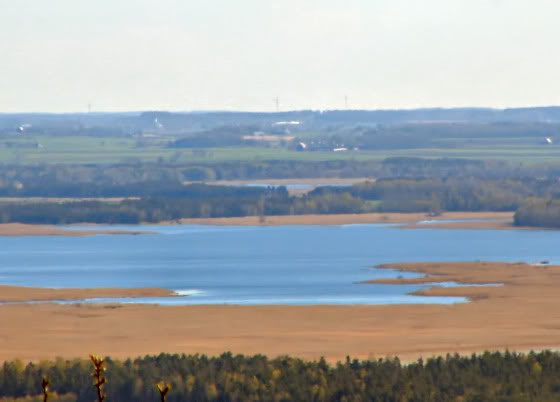
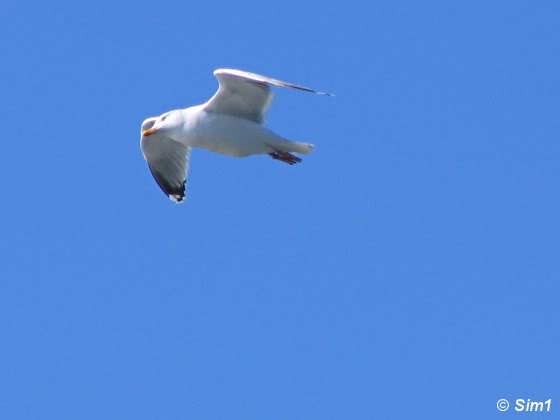
After lots of culture it is time for some more nature! And where better to find that then at Lake Tåkern! A bird watchers paradise! Lake Tåkern is a nature reserve and about 5400 hectares big. About half of it is open water and the rest is devided by woodlands, meadows and reedbeds. The aim of the reserve is to protect nature and preserve it for the future, as it is one of the most important nesting and resting places for wetland birds in the country. The area is rather easy to reach with two visiting areas in the south (Glänås and Dagsmosse) and two to the north-eastern part of the lake (Svällinge and Hov). As this a bird protecting area the area is closed during the from 1 April until 30 June, with the exception of specifically marked roads, visiting areas and footpaths.
In the photo you can see a nice view over Lake Tåkern, taken from the viewpoint at Omberg.


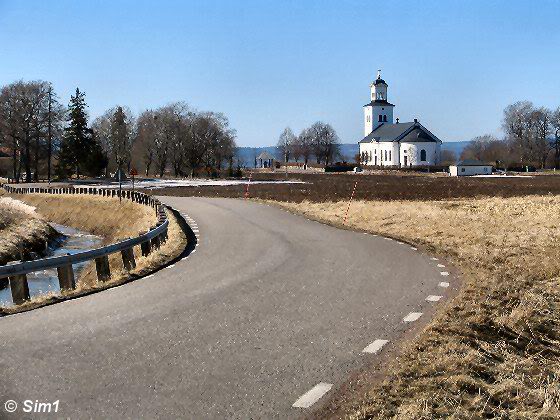
Rök is just a tiny dot on the map in the middle of nowhere. A tiny little curvy road brings you to the village. You'll drive through nice open landscape and in the distance you can see a lovely white church. But there is more to Rök than only that. Maybe it is hard to believe, but this little place is famous! Why? It is the village where you can find the most famous of runestones. The runestone is called the Rök Stone or in Swedish Rökstenen. It has the longest known runic inscription in stone and it is also considered to be the most beautiful of runestones.
The runestone is easy to find, it is outside in front of the little church of Rök. This church is not only lovely to see, it also plays a central role in the discovery of the runestone.
The existence of the Rök stone has been known since the 17th century. It was found as part of the church storehouse. Here it was build into a wall and only the front side of the stone could be seen. When the storehouse was pulled down the stone needed a new spot and it got a place in the entrance way of the new church. But in 1933 it got its own place: right outside the church! A perfect spot as now everyone can admire the runes that are covering it. No spot has been left uncovered: The runes are written on all sides: front, back, top and sides.
I made a separate page where you can read a bit more about Rök

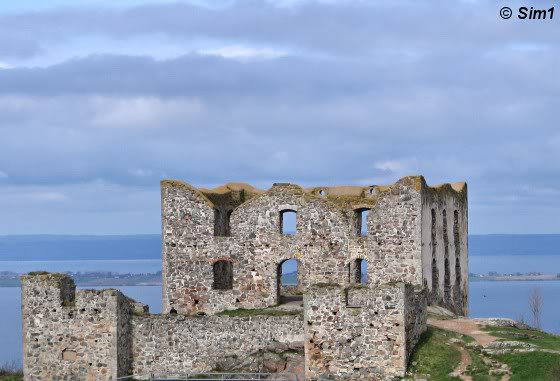
Brahehus ruins are perfect for, a quick stop along the way. The ruins are located right beside highway E4. close to the village of Gränna. It even has got an own exit off the highway! The exit leads to a gasstation, restaurant and parkinglot, but from there is a little road and tunnel underneath the highway that leads to the ruins of Brahehus. I didn't think that the ruins are thats spectacular to see, but it does make a great stop on a long drive. What I did enjoy a lot was the view. From the ruins of Brahehus you have a wonderful view over Lake Vättern, the little village of Gränna and the island of Visingsö. Brahehus is located on a ridge towering high above lake Vättern, making these beautiful views possible.
Brahehus was build in 1640 by Per Brahe junior. Unfortunately a fire destroyed the castle completely in 1708.

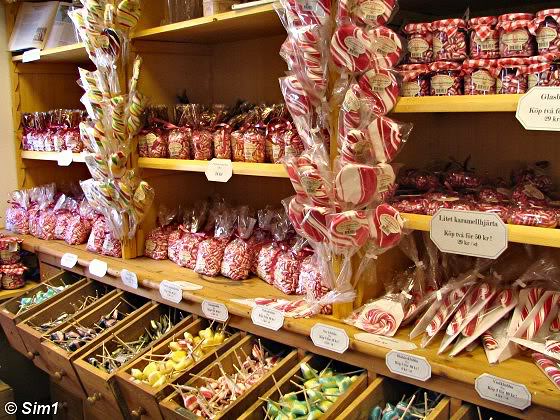
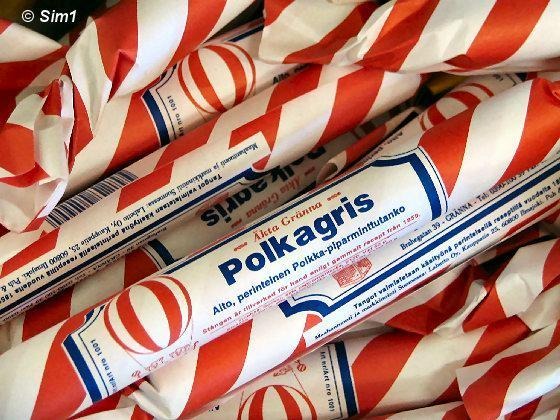
Gränna is known for its red and white candy canes, also known as "peppermint rocks" or by the Swedish name "Polkagris". This is the place for a real sweet tooth, there are candy shops by the dozens in Gränna! Almost unbelievable that a little town like this can have so many candy shops side by side! And they are all filled with peppermint rocks in any thinkable taste and variety! The traditional one is striped red and white and tastes like peppermint, but nowadays you can choose out of many colours and flavours.
In many of the candy shops you can see the actual making process of the "Polkagris". It is quite fun actually seeing how a some boiling hot liquid (a mixture of water and vinegar) is transformed after lots of pulling, kneading and twisting in a delicious looking candy cane. And I can promise you, hahaha, you won't leave town without at least taking a few of these candy canes with you. Even I fell for the temptation ;-)
The tradition of making "Polkagris" in Gränna started in 1859 by the widow Amalia Eriksson. Now Gränna is famous in whole Sweden for the Polkagris and has become a major tourist attraction in the region.

When I drive through the Big Lakes area of Sweden, I often try to make a stop at one of the many historical sites in this part of Sweden. And on this day in July, returning from a vacation on the West Coast, we made a stop at Husaby kykra (Husaby Church). This is one of Sweden's more known churches, and absolutely worth a visit in my opinion!
The triple turret tower looks very impressive. And the inside of the church has a lot of interesting historical details, like the hagioscope (lepars window), the 'ambo', and of course the ceiling paintings from the 1300s.
The first church that was built in this spot was probably a 'stave church'. In the early 1100s, the stone tower was added at the western end of the stave church. A little later, in the same century, the long house with absid choir was built of tufted sandstone and in a Romanesque style.
Your can read more about this historic church on my Husaby page

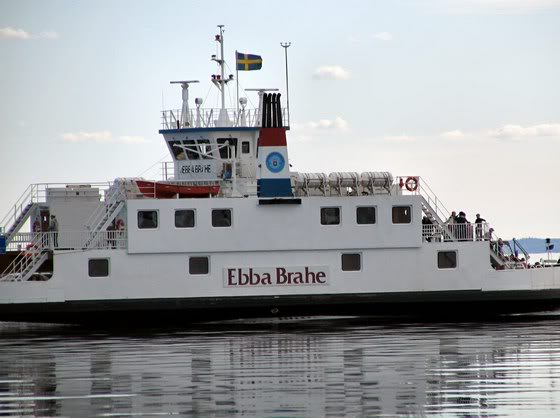
Ferry to Visingsö
You can't visit Lake Vättern without being on the water and my way of doing so was by taking the ferry from Gränna to the island of Visingsö. It is a short enjoyable ride over the lake to the island. It is a car ferry, so you can even take your car with you if you want to explore the island a bit further.
During our trip the waters of Lake Vättern were amazingly calm, with a nice evening sun. The distance between the village of Gränna and the island of Visingsö isn't so big, so you can already see where you are going as soon as the boat leaves. We used it both as an excuse to have a little boat tour on the lake and also to make a quick trip to the island of Visingsö possible.

It would be great to hear from you!
You can reach me by sending me an Email.
Or leave a comment / reaction in the box below.
You can also follow me on Facebook: Sim1 around the World Blog
:-) Simone